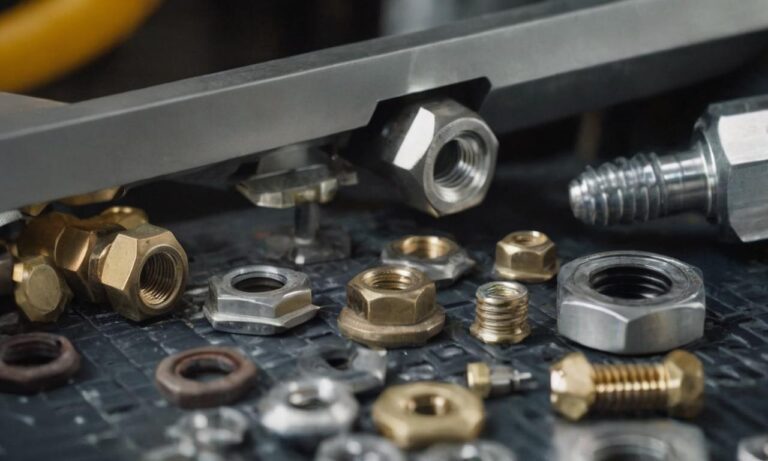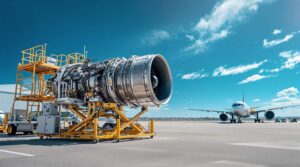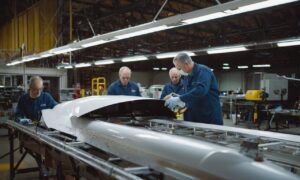In the dynamic realm of aviation, every component plays a crucial role in ensuring the safety and functionality of an aircraft. One such component that warrants attention is the use of self-locking nuts, a small but vital element in the intricate machinery of aviation.
The Significance of Self-Locking Nuts
Self-locking nuts serve a critical purpose in preventing unintended loosening of fasteners in aircraft. The aviation industry demands precision and reliability, and self-locking nuts contribute significantly to meeting these stringent requirements. These nuts feature a unique design that adds an extra layer of security to fastened components, mitigating the risks associated with vibration, turbulence, and other operational stressors.
Regulatory Approval and Standards
Ensuring the safety of aircraft is a top priority, and the use of self-locking nuts is subject to regulatory scrutiny. Regulatory bodies, such as the Federal Aviation Administration (FAA), have established guidelines and standards that dictate the acceptable use of self-locking nuts in the aviation industry. Compliance with these standards is paramount to guaranteeing the airworthiness of an aircraft.
Material Selection and Compatibility
The materials used in self-locking nuts are critical factors in their performance. Aircraft operate in diverse environmental conditions, from extreme temperatures to varying levels of humidity. Self-locking nuts must be crafted from materials that withstand these conditions without compromising their integrity. Additionally, compatibility with other materials in the aircraft system is a crucial consideration to prevent corrosion and ensure long-term reliability.
Installation and Maintenance Practices
Proper installation and maintenance are key aspects of ensuring the effectiveness of self-locking nuts throughout an aircraft’s lifecycle. Following manufacturer guidelines and recommended practices is essential. Periodic inspections and maintenance checks are imperative to identify any signs of wear, damage, or potential issues with self-locking nuts, allowing for timely replacements and preventing unforeseen complications.
Advancements in Self-Locking Nut Technology
The aviation industry is continually evolving, and so is the technology associated with aircraft components. Ongoing research and development efforts focus on enhancing the performance and reliability of self-locking nuts. Innovations such as advanced coatings, smart materials, and improved designs contribute to the efficiency and longevity of these crucial fasteners.
Conclusion
Self-locking nuts play a pivotal role in maintaining the structural integrity and safety of aircraft. When used in accordance with regulatory standards and best practices, these small but mighty components contribute to the overall reliability of aviation systems. As technology advances, so too will the capabilities of self-locking nuts, ensuring that they remain a cornerstone in the intricate web of aircraft safety and functionality.
Frequently Asked Questions
For a comprehensive understanding of self-locking nuts in aviation, explore the following frequently asked questions:
1. How do self-locking nuts prevent unintended loosening?
Self-locking nuts employ innovative designs, including nylon inserts or prevailing torque features, to resist vibration and prevent spontaneous loosening of fasteners.
2. What are the key regulatory bodies overseeing the use of self-locking nuts in aviation?
The Federal Aviation Administration (FAA) is a primary regulatory authority, setting guidelines and standards to ensure the safe and proper use of self-locking nuts in aircraft.
3. Can self-locking nuts withstand extreme environmental conditions?
Yes, self-locking nuts are crafted from materials designed to withstand diverse environmental conditions, including extreme temperatures and humidity levels, ensuring their reliability in various operating environments.
4. How often should self-locking nuts undergo maintenance checks?
Regular inspections are crucial. Follow the manufacturer’s guidelines for maintenance frequency, and conduct periodic checks to identify signs of wear, damage, or potential issues that may affect the performance of self-locking nuts.
5. What advancements have been made in self-locking nut technology?
Ongoing research and development have led to advancements such as advanced coatings, smart materials, and improved designs, enhancing the performance, efficiency, and longevity of self-locking nuts in aviation applications.
Exploring Specialized Applications
Beyond standard use, self-locking nuts find specialized applications in specific aircraft components, such as avionics, landing gear, and propulsion systems. The unique demands of these components necessitate tailored self-locking nut solutions to ensure optimal performance and safety.
| Specialized Application | Unique Self-Locking Nut Features |
|---|---|
| Avionics | High precision and resistance to electromagnetic interference. |
| Landing Gear | Enhanced durability to withstand high impact forces during landing. |
| Propulsion Systems | Corrosion-resistant materials for exposure to varying temperatures and chemicals. |
Global Impact of Self-Locking Nut Innovations
The advancements in self-locking nut technology not only benefit the aviation industry but also have a global impact. These innovations contribute to increased safety standards, reduced maintenance costs, and improved sustainability by extending the lifespan of aircraft components.






